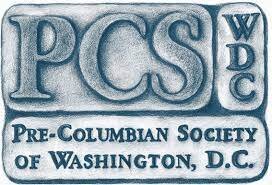Obsidian Acquisition and Use at the Capital of the Mexica Empire
Diego Matadamas-Gomora, PhD candidate, Tulane University
(NOTE: This meeting will take place Friday, July 11, 2025)
Photo by Michel Zabé, courtesy of Proyecto Templo Mayor, INAH.
Obsidian was a primary resource for the Mesoamerican political and ritual economy. This volcanic glass was used to produce tools as early as the Archaic period (c. 6000-2000 BCE) and remained a key resource until the colonial period. Due to its natural formation process, each obsidian outcrop contains a particular chemical signature, which can be measured to identify its specific provenance. From these studies, we can explore the exploitation, circulation, and use of obsidian.
After more than 40 years of archaeological excavations at the Templo Mayor of Tenochtitlan, capital of the Mexica (Aztec) Empire, numerous obsidian artifacts have been recovered throughout its multiple construction phases. This presentation summarizes the results of the analysis of obsidian artifacts from the Templo Mayor. The diversity of obsidian types suggests a dynamic economic system that transported this raw material from multiple regions to the capital city. Additionally, our speaker will demonstrate how obsidian acquisition varied over time along with the transformations of Mexica society, from its origins as a small urban center to its peak during the first half of the 16th century.
Diego Matadamas-Gomora is a Mexican archaeologist specializing in the Postclassic period, particularly in Central Mexico. He is currently a PhD Candidate at Tulane University. He holds a BA in Archeology from the Escuela Nacional de Antropología e Historia in Mexico City and an MA in Anthropology from Tulane University. From 2009 to 2017, he was a member of the Proyecto Templo Mayor in Mexico City, where he conducted archaeological excavations in the ancient capital of the Mexica Empire. His current research focuses on the rural community of Tlalancaleca in Puebla, where he examines local dynamics at rural sites and the interactions between rural and urban areas. His research interests include Mesoamerican art and religion, complex societies, ruralism, lithic technology, trade, ancient technology, GIS, and archaeometry.
This lecture will be presented on Zoom. Click HERE to preregister for this event.

